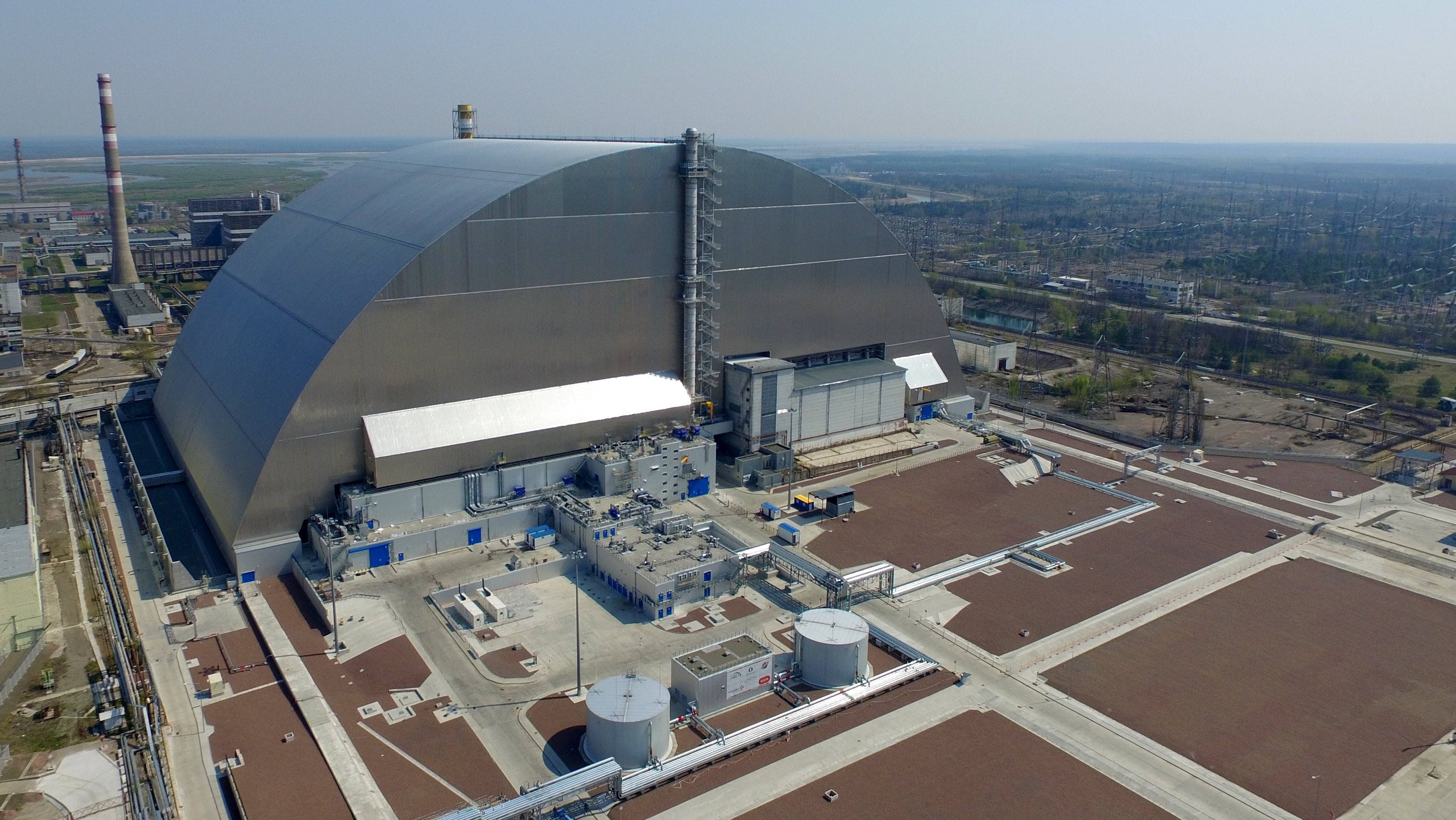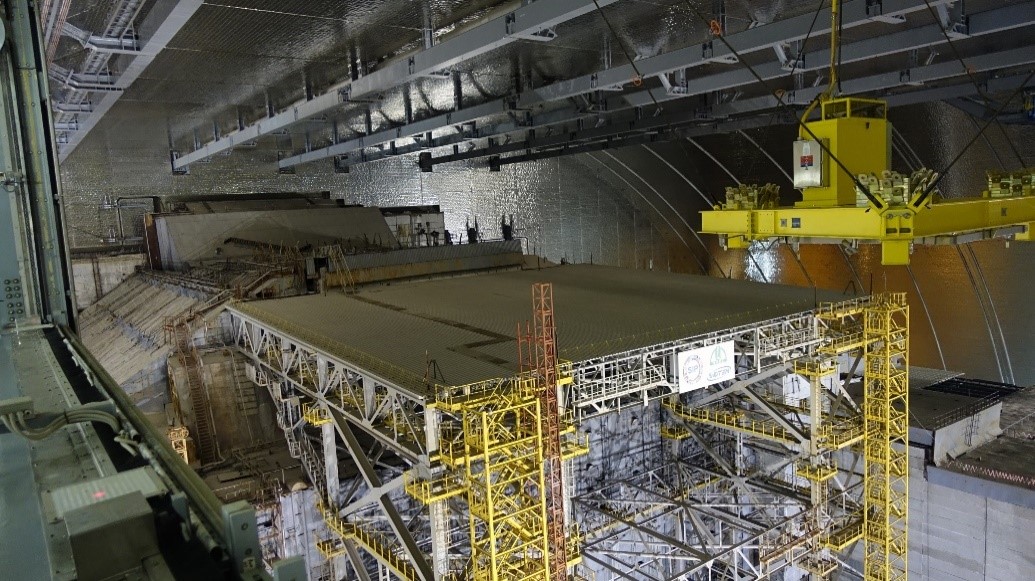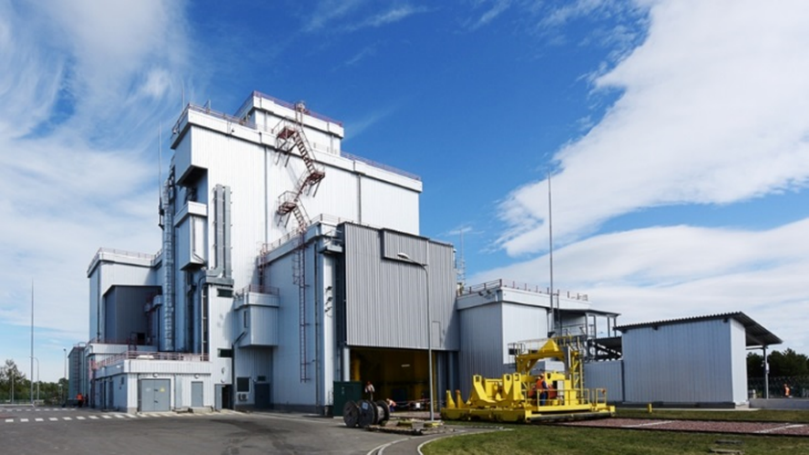Chernobyl: 35th anniversary of the nuclear disaster

26 April marks the 35th anniversary of the Chernobyl nuclear disaster: During an experiment, the power of the reactor in Unit 4 increased excessively due to a series of operating errors, and the fuel and coolant overheated. Several explosions and a fire were the result - around eight tons of radioactive fuel escaped from the reactor core into the surrounding area. In the same year, a provisional protective shell was erected over the destroyed reactor: the so-called Sarcophagus. An exclusion zone was set up within a 30-kilometre radius of the nuclear power plant, which may only be entered with permission. A few returnees live in the exclusion zone, the so-called samosely ("self-settlers"). The area is also becoming increasingly popular with tourists, who have been able to visit the exclusion zone since 2008 as part of organised and state-approved tours.
Since the accident, work has continuously been going on to restore the Chernobyl site to an ecologically safe state. Most of the staff responsible for this work live within the exclusion zone for several weeks. Due to the coronavirus pandemic, the number of employees working directly at the plant is currently significantly limited. For the most part, work has been ordered in online mode. Essentially, the only employees working at the plant are those whose work has a direct influence on ensuring nuclear safety and radiation protection during decommissioning.
In the exclusion zone, forest fires occurred again and again during the dry seasons and were particularly extensive in 2020. The fires can lead to radioactive particles being stirred up and released into the atmosphere. However, from a radiological point of view, there is no danger for the population in Germany. Last year, the administration increased its efforts to detect and prevent fires. To this end, among other things, the technical equipment of the fire brigade was improved, new devices for the early detection of fires were tested, and fire patrols and drills were carried out.
New Safe Confinement (NSC)

The New Safe Confinement was slid over the old Sarcophagus in 2016 to ensure protection against the release of radioactive substances into the environment for at least 100 years and at the same time to provide the conditions for controlled dismantling. The NSC with the old Sarcophagus is currently in a phase referred to as "industrial experience operation" (warranty operation).
In the subsequent phase of operation proper, the unstable structures of the old Sarcophagus will first be dismantled under the protection provided by the NSC by 2023. It is planned to dismantle the remaining building structures together with the three other reactor units at the Chernobyl site by 2065.
Interim Spent Fuel Storage Facility (ISF-2)

The Interim Spent Fuel Storage Facility (ISF-2) for the spent fuel elements at the site is currently under trial. More than 21,000 spent fuel elements are to be put into dry storage in concrete modules for at least 100 years.
In 2020, 186 spent fuel elements were successfully emplaced in the ISF-2 for the first time as part of the so-called "hot tests". The test phase will be continued. The interim storage facility will start regular operation as soon as the operator of the Chernobyl nuclear power plant receives the necessary operating licence from the Ukrainian nuclear supervisory authority. The licence for continuous operation is expected to be granted in the course of this year.
Handling of radioactive waste
In July 2019, the trial operation of the Liquid Radwaste Treatment Plant (LRTP) was started. During the one-week trial operation, 34 waste packages in the form of cemented drums were produced in the plant. After a waiting period of at least 28 days, the waste prepared for disposal can be transferred to the Engineered Near Surface Disposal Facility (ENSDF) for low and intermediate level radioactive waste. The operating licence for the facility had already been granted in December 2014.
In the "Industrial Complex for Solid Radwaste Management" (ICSRM), solid radioactive waste from the interim storage facility at the site is to be conditioned. Subsequently, the prepared waste products will also be stored at the ENSDF.
GRS experts collect data on the radiological situation and on forest fires
GRS has been dealing with the Chernobyl reactor accident and its consequences since 1986. This includes both the scientific reappraisal of the accident and the support of the authorities on site. Since 2006, GRS has been developing the "Shelter Safety Status Database" (SSSDB) together with Ukrainian scientists. The database collects data on the radiological situation on site, which are gathered in cooperation with Ukrainian experts.
For example, a total of over a thousand forest fires from the period 1993 to 2020 are recorded in the database. The activity values are stored in the database together with other parameters in order to better investigate possible connections between the fires and polluted air. From the second half of 2021, data on wildlife contamination are also to be included.
Handling of fuel-containing materials at Chernobyl
In a project on which GRS is working together with the Ukrainian technical expert organisation SSTC/NRS, the behaviour of the nuclear-fuel-containing materials inside the Sarcophagus and the associated radiological impacts are to be systematically analysed.
This work follows on from earlier joint investigations into the monitoring of exposed nuclear fuel in the Sarcophagus until it is recovered and disposed of. It is also intended to continue the work on analysing factors that have a significant influence on the condition of the nuclear fuel.
Find out more
- Website of the State Agency of Ukraine on Exclusion Zone Management
- Website of the NPP Tschernobyl
- Website of the State Scientific and Technical Centre for Nuclear and Radiation Safety
- Website of the Institute for Safety Problems of Nuclear Power Plants
- The Federal Office for Radiation Protection: "Forest fires in Chernobyl no danger for Germany"
Sven.Dokter
GRS
Sven.Dokter@grs.de